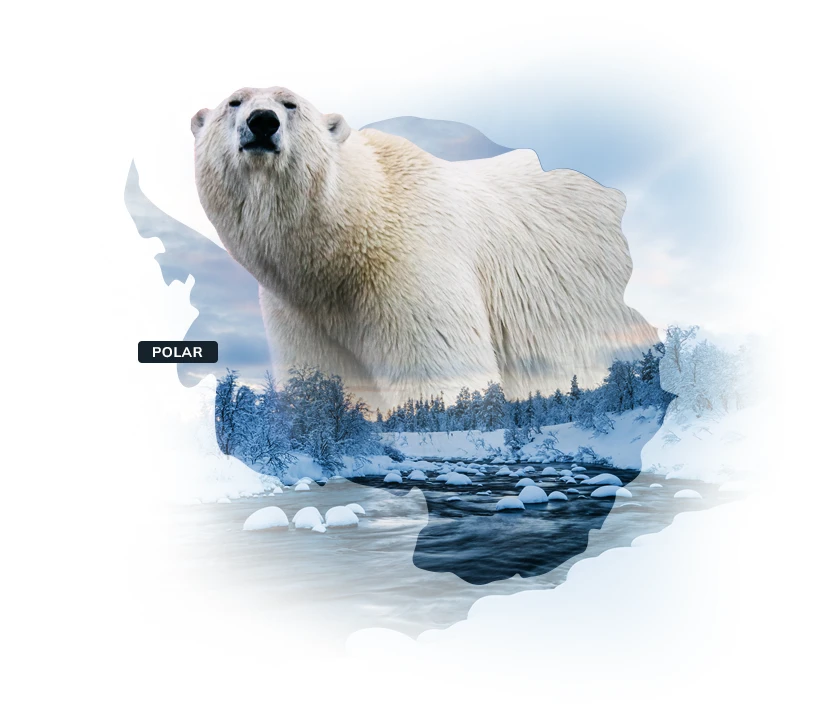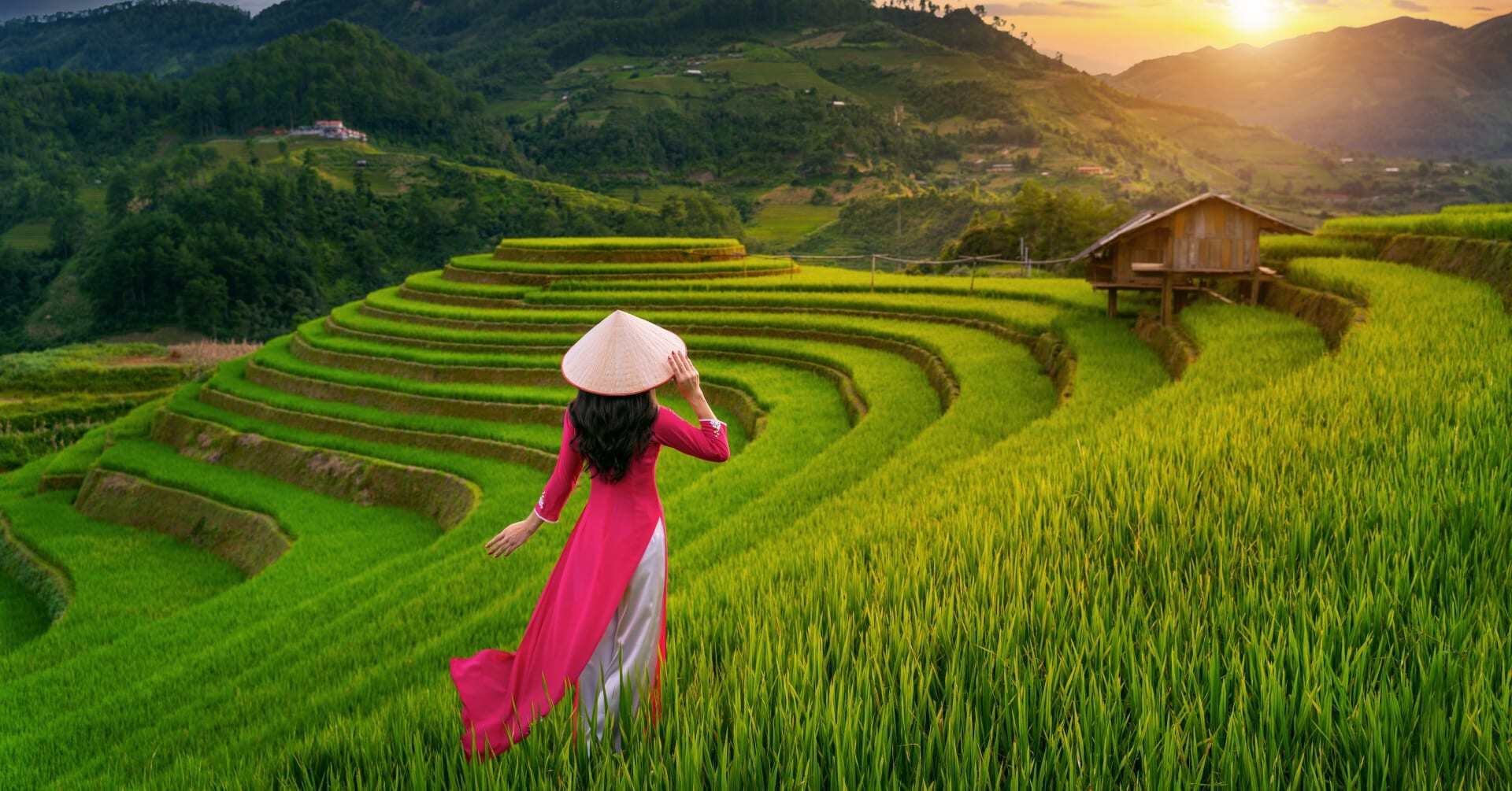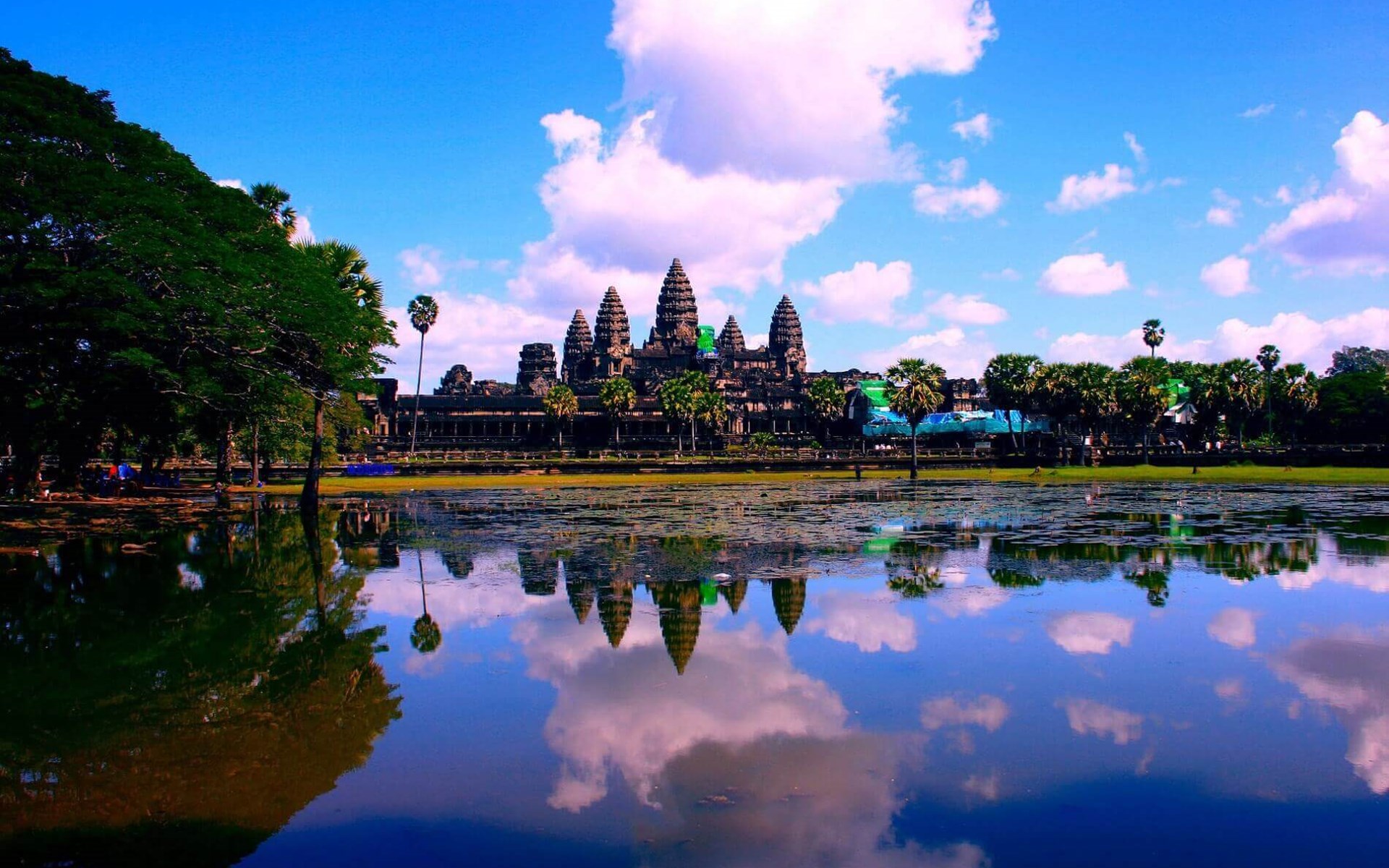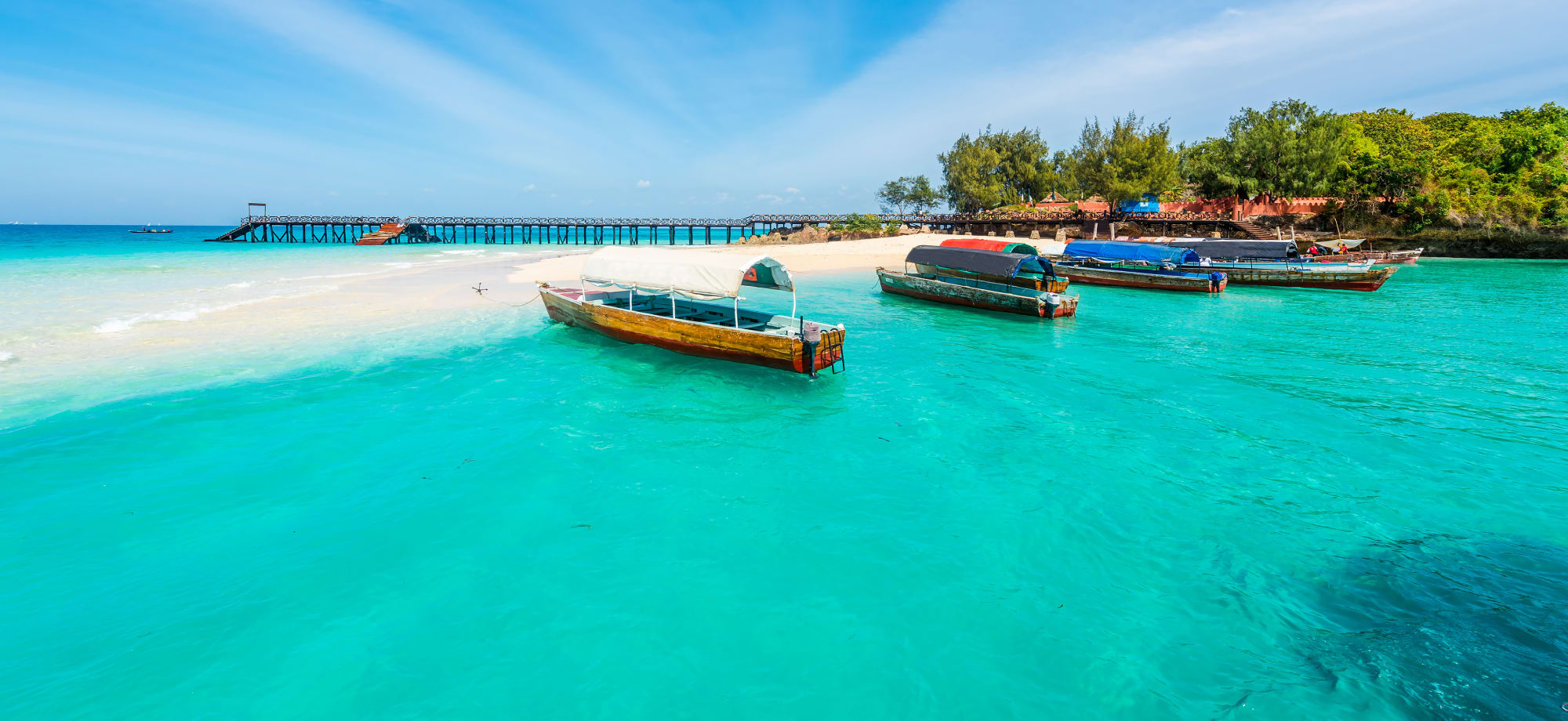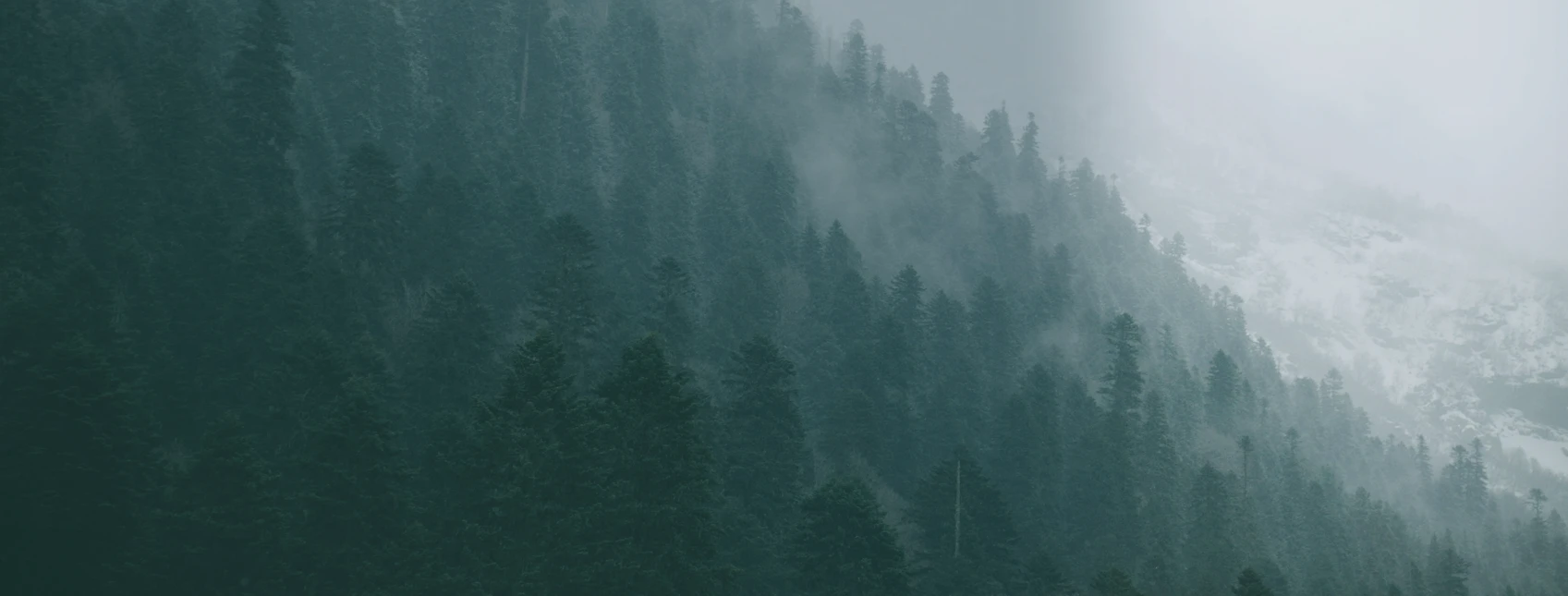Discover the seasonal Serengeti Wildebeest Migration patterns throughout the year
The Serengeti Wildebeest Migration, also called the Great Wildebeest Migration, is one of the most exciting natural wonders of the world.
Safari travellers have the unique opportunity to enjoy this grand spectacle up close and in person on safari in Kenya and Tanzania.
Below we've shared vital information on the monthly Serengeti Wildebeest Migration patterns to discover what the wildebeest migration is and when is the best time to travel.
Have a look at some of our itineraries:

|

|

|
What is the Serengeti Wildebeest Migration?

Each year, over 1.5 million wildebeest, zebras, gazelles & impalas gather up their young and embark on an epic journey from the southern Serengeti in Tanzania to the Masai Mara in Kenya in search of greener pastures.
The unique opportunity to be a part of this massive adventure on private safari is the ultimate goal for African Safari lovers; perfect for novice or experienced travelers.
Depending on the time of year, there are ideal locations in the Serengeti and Masai Mara to embark upon the experience of a lifetime and witness the wildebeest migration.
See below for a guide to a monthly Serengeti Wildebeest Migration patterns, what to expect on a safari holiday, and the best safari lodges to see the Great Migration.
- January, February & March Migration Patterns
- April & May Migration Patterns
- June, July & August Migration Patterns
- September & October Migration Patterns
- November & December Migration Patterns
Month-by-month Wildebeest Migration Patterns
The Great Wildebeest Migration is a year-round phenomenon, dictated by the rains, which sees the herds moving in a constant clockwise motion throughout the Serengeti and Masai Mara.
The wildebeest migration map below represents the seasonal migration movements throughout the year.
The wildebeest herds can typically be found on the Ndutu plains in the southern Serengeti from December to April (map marker 1 & 2) and the calving season takes place in late January-early February.
Once the long rains arrive in April-May (map marker 3) the herds move towards the Serengeti’s Western Corridor.
Then the wildebeest face perilous water currents and predators as they attempt to cross the Grumeti River to continue their journey north towards the lush pastures of the Masai Mara (map marker 4, 5 & 6).
Finally, the herd reaches their destination and they remain in the Masai Mara for around three months, before heading back to Tanzania in November (map markers 7 & 8).
We’ve put together this month-by-month guide to help you understand where in Kenya or Tanzania you should go and when, if you want to maximise your chances of seeing the migration.
January, February & March Migration Patterns
Over a million wildebeest, also called Gnu, and zebra spend the first months of the year in the great plains of the Serengeti, feeding off the short grass and preparing for migration.

The majority of wildebeest calves are born here in February, with around half a million new calves in the Serengeti that month. As the Southern plains become picked over, the herds begin to spread west and prepare for their migration north in the Spring.
This makes for an incredible sight on game drives - you can expect to see newborn calves and you might be lucky enough to witness a birth, plus you’re likely to see plenty of predator action.
The wildebeest encourage their newborns to get on their feet immediately and join the herd where there is safety in numbers. Lions, cheetahs, leopards, spotted hyenas and rare wild dogs wait in the surrounding areas ready to prey on the weak and vulnerable members of the herd.

An easy kill isn’t always guaranteed as the female wildebeest instinctively head to the short grass plains so that they can see predators approaching and they form a barricade around birthing mothers to protect them and their young, ensuring the majority of the newborn calves survive.
Towards the end of the short dry season (usually end of March), the short-grass plains of the southern Serengeti begin to dry out and the wildebeest and zebra start to head towards the western woodlands.
April & May Migration Patterns
April usually brings the first signs of migration, with hundreds of thousands of wildebeest beginning their arduous journey across the western plains and finally north.
The herds move through the Ndoha and Dutwa plains, adjacent to the Mbalagweti River. Herds may begin to pile up near the Mbalagweti and Gumeti Rivers, awaiting the crossing, a dangerous obstacle for the animals.
June, July & August Migration Patterns
The rutting season (mating season) usually starts in June, and you can expect to see fierce fighting between competitive males as they vie for the attention of females.
By July, the herds head north towards the fresh grass of the Masai Mara. To get there they must face one of the greatest obstacles of their journey – crossing the Grumeti River.
The dramatic river crossings, one of the most exciting events of the Great Migration, usually start in July, but the precise timing depends on the rains.
The wildebeest and zebra grow into a ‘mega-herd’ before attempting to cross the Grumeti River to continue their journey north. With treacherous water currents and Nile crocodiles lurking in the muddy waters and lions, cheetahs, leopards and hyenas waiting on the river banks, only the strongest survive.

During the course of their migration an estimated 250,000 wildebeest die – either from predator attacks, thirst, starvation or pure exhaustion.
September & October Migration Patterns
The eye of the migration moves to Kenya and the Masai Mara while the beasts go in search of fresh grass to graze.
This is a wonderful time to be on safari in the Masai Mara. As the rains begin in October, the herds begin their long journey South back to the Serengeti following the new grass.
Of course, this doesn’t mean that life becomes easy, as danger still lurks in the form of hunting prides of lion and packs of hyena.
November & December Migration Patterns
The short rains start in Tanzania at the end of October or early November, drawing the wildebeest and zebra back to the plains of the southern Serengeti which are green and lush once more.
The bulk of the herd arrives back in the Serengeti for the rainy season. The Wildebeest may begin to give birth and prepare to complete the cycle over again next year!

Wayfairer Top Tip: A hot-air balloon safari over the plains of the Serengeti is a fantastic way to get a perspective of how huge the herds are.
5 Best Safari Lodges to Choose for your Serengeti Migration Holiday
Combine your wildebeest migration safari with staying in one of the best safari lodges across Kenya and Tanzania. Find below our top 5 safari lodges:
Serengeti Serena Safari Lodge, Tanzania

The award-winning luxury lodge features panoramic views of the Serengeti and is a perfect location to find the Wildebeest grazing and preparing for Migration.
Serengeti Serena Safari Lodge is part of the prestigious Serena Hotels group and is widely lauded as top luxury safari lodge.
From the infinity pool to the bush breakfast, this accommodation is great for travellers who want the ultimate experience.
Serengeti Pioneer Camp, Tanzania

Serengeti Pioneer Camp is perfectly situated right at the heart of the action in the Serengeti! You will enjoy access to a diverse array of wildlife as well as a front row seat to the Great Wildebeest Migration. Experience the panoramic views of Moru Kopjes and endless plains, from the camp’s few hundred feet high individual kopje.
There are twelve unique and beautiful luxury safari tents situated on the quintessential African safari lodge. Dine under the stars after a satisfying day of luxury safari.
Kati Kati Tented Camp, Tanzania

Sleep under the African stars in this environmentally conscious tented safari lodge. Kati Kati Tented Camp is prime for those looking to stay in the middle of the action.
Spend time around the rustic campfire or enjoy a magical hot air balloon safari. Kati Kati is a wonderful option to witness the Great Migration spectacle because they offer mobile camps, following the action as it traverses Tanzania.
These camps are the best way to enjoy the show for the adventure-seeker. The tented camps offer comfortable accommodation amidst the African Bush.
Saruni Wild, Kenya

A tented camp in the Masai Mara, Saruni Wild has a unique advantage of being inside the Masai Mara plains on the border between the Mara North Conservancy and the Lemek Conservancy.
In the heart of the action, these luxury tents allow travelers to experience the Wildebeest Migration unlike any other.
We recommend this camp for guests who enjoy firelight meals under the night sky with opportunities to see wildlife all around you.
Saruni Mara, Kenya

Saruni Mara represents the height of excellence in boutique lodges in Kenya. Situated in a beautiful valley bordering the Masai Mara reserve, this is the place to be for the Great Migration.
Featuring five beautiful cottages and both family and private villas, Saruni Mara is a special accommodation experience.
With local Masaai guides and an excellent wellbeing space, Saruni Mara offers guests a tranquil retreat close to the action of the Great Wildebeest Migration.
If you'd like to plan a holiday to see the Great Migration, call our Luxury Travel Specialists for a chat about your dream trip or fill out our no-obligation enquiry form.





